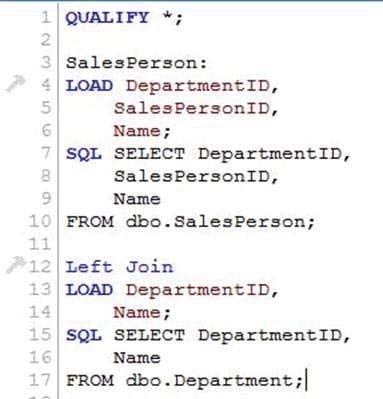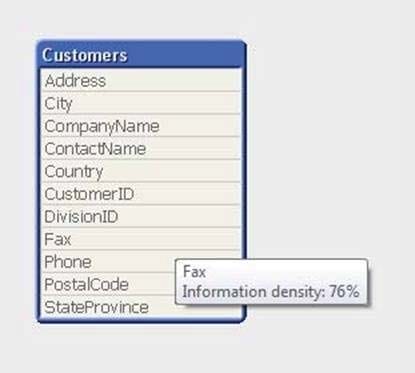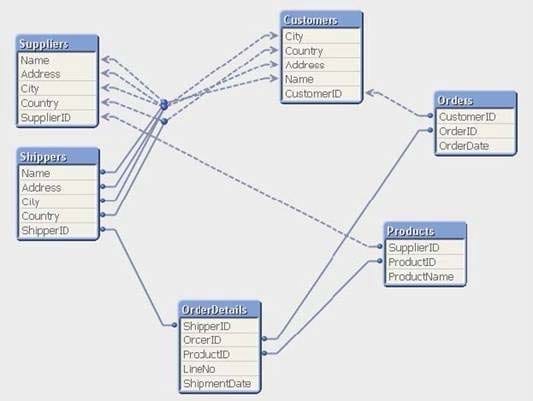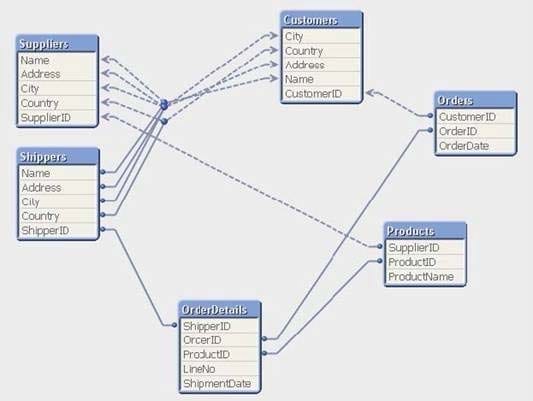Exam Details
Exam Code
:QV_DEVELOPER_01Exam Name
:QlikView 11 Developer CertificationCertification
:QlikView CertificationsVendor
:QlikViewTotal Questions
:70 Q&AsLast Updated
:Jun 08, 2025
QlikView QlikView Certifications QV_DEVELOPER_01 Questions & Answers
-
Question 41:
A customer needs to build a QlikView application using data in text files. A new data file is created every day and stored in a folder on the customer's network named s.\userfiles. The file name is in the form dataYYYYMMDD.txt, where YYYYMMDD represents the current date, such as data20111231.txt. Which data load strategy should a developer use to load all of the customer's data files each day?
A. the statement 'Directory s.\userfiles\*;' preceding the Load statement
B. the 'Wildcard Load' feature by setting the 'File Location' in Document Properties
C. 'Load * From [s.\userfiles\data*.txt] (ansi, txt, delimiter is '\t', embedded labels);'
D. 'Load * From_Field (s.\userfiles\, 'data*.txt') (ansi, txt, delimiter is '\t', embedded labels);'
-
Question 42:
A project to develop a QlikView application for a customer requires splitting developers into two teams.
One team will focus on developing source database query knowledge to create a reusable data layer.
There are several application-specific business rules for this project. The customer needs to incrementally
accumulate history for the QlikView application over time.
The second team will focus on developing the presentation layer. This team also has data modeling and
scripting expertise, but does not have source database query knowledge.
Which data loading strategy should the developers use on the project?
A. create a series of QVWs that apply the business rules and then binary load them into the presentation layer QVW
B. create the presentation layer QVW and connect directly to the source data and apply the business rules in the script
C. create QVDs of the source data and load them into the presentation layer QVW and apply the business rules in the script
D. create QVDs of the source data, apply the business rules and store a second layer of QVDs, and then load these QVDs into the presentation layer QVW
-
Question 43:
Refer to the exhibit to the right.

When a customer reloads the script displayed in the exhibit, it fails to respond and complete, and displays
an error message.
OBJECT OUT OF MEMORY.
How should the developer resolve the logic error in the script?
A. change the script to use an lnner Join instead of Left Join
B. change the QUALlFY * command to list out only the fields that need to be qualified
C. change the Left Join command to include the name of the table being joined enclosed in parentheses
D. change the DepartmentlD field in the salesPerson table to match the qualified field name of DepartmentlD in the Department table
-
Question 44:
Which QlikView script should a developer add to a Load script to output the resulting number of rows from a joining Load statement to the script Execution Progress window and the script log file?
A. LET vNumRows = NoOfRows('TableName'); ECHO 'Resulting Rows = $(vNumRows)';
B. SET vNumRows = NoOfRows('TableName'); ECHO 'Resulting Rows = $(vNumRows)';
C. LET vNumRows = NoOfRows('TableName'); PRlNT 'Resulting Rows = $(vNumRows)';
D. SET vNumRows = NoOfRows('TableName'); Response.Write 'Resulting Rows = $(vNumRows)';
E. LET vNumRows = NoOfRows('TableName'); TRACE 'Resulting Rows = $(vNumRows)';
-
Question 45:
Refer to the exhibit below.

A QlikView report does not match the legacy report it was designed to replace. The purpose of the report
is to count the number of customers per year and in total.
Why is there a difference between the Total row values in the two reports?
A. The legacy report calculates the total customer occurrences, while the QlikView report counts only distinct customers.
B. The legacy report calculates the total customer occurrences, while the QlikView report calculates the customer ranking.
C. The legacy report totals the number of customers correctly, while the QlikView report is dropping records.
D. The legacy report totals the number of customers correctly, while the QlikView total row is set to sum of rows.
-
Question 46:
Refer to the exhibit to the right.

What can a developer determine from the exhibit about the values in the Fax field?
A. The Fax field has NULL values for 24 percent of the records.
B. The Fax field has blanks for 24 percent of the records.
C. The Fax field has 76 percent incomplete invalid fax numbers.
D. On average, 76 percent of the Fax field values are non-spaces.
E. The longest Fax value is 76 percent of the assigned field length.
-
Question 47:
A customer created 20 expressions that will be used repetitively throughout a QlikView application. These expressions could appear in more than 50 objects located on 15 tabs.
How can a developer efficiently apply and maintain these expressions?
A. create the required expression in each object as needed and edit them in the Expression Overview
B. load the text for each expression from a text file into a table in the data model and link it to the fact table
C. create a table of indices and expression text and use the index value in place of the expression text in each object
D. create a variable for each expression that contains the expression text and use the variable in place of the expression in each object
-
Question 48:
Refer to the exhibit to the right.

Which technique should be used by a developer to eliminate the circular reference in the data model displayed in the exhibit?
A. qualify all the fields in the data model ending with 'lD'
B. qualify the fields Name, Address, City, and Country in the shippers and suppliers tables
C. rename the fields shipperlD in the shippers table and supplierlD in the suppliers table
D. rename the fields OrderlD in the OrderDetails table and supplierlD in the Products table
-
Question 49:
A customer has an Actual sales fact table aggregated at the transactional level and a Budgeted sales fact table aggregated at the monthly level. The tables share many of the same dimensional fields.

How can a developer form the data model?
A. qualify both tables and Unqualify all shared fields
B. left join the Budgeted sales table onto the fact table using Month as the key
C. concatenate Load the Budgeted sales table into the Actual sales table loading shared fields as NULL
D. create a link table containing the dimensional fields then link each fact table using a concatenated key
-
Question 50:
A customer has sales data containing a fact table, sales and dimension tables, Customer, ltem, and
Vendor. After loading the data, the Entity Relationship Diagram (ERD) has a synthetic table containing the
fields Name and Address from the Vendor and Customer tables.
How can a developer eliminate the synthetic keys and appropriately link the data?
A. qualify all tables
B. alias all primary key fields
C. left join the Customer data onto the sales table
D. qualify all tables and then unqualify all key fields
Related Exams:
QREP
Qlik Replicate CertificationQSBA2021
Qlik Sense Business Analyst Certification - February 2021 ReleaseQSBA2024
Qlik Sense Business Analyst Certification - 2024QSDA2018
Qlik Sense Data Architect Certification - June 2018 ReleaseQSDA2019
Qlik Sense Data Architect Certification - June 2019 ReleaseQSDA2021
Qlik Sense Data Architect Certification - February 2021 ReleaseQSDA2022
Qlik Sense Data Architect Certification - 2022QSDA2024
Qlik Sense Data Architect Certification - 2024QSSA2018
Qlik Sense System Administrator Certification - June 2018 ReleaseQV_DEVELOPER_01
QlikView 11 Developer Certification
Tips on How to Prepare for the Exams
Nowadays, the certification exams become more and more important and required by more and more enterprises when applying for a job. But how to prepare for the exam effectively? How to prepare for the exam in a short time with less efforts? How to get a ideal result and how to find the most reliable resources? Here on Vcedump.com, you will find all the answers. Vcedump.com provide not only QlikView exam questions, answers and explanations but also complete assistance on your exam preparation and certification application. If you are confused on your QV_DEVELOPER_01 exam preparations and QlikView certification application, do not hesitate to visit our Vcedump.com to find your solutions here.